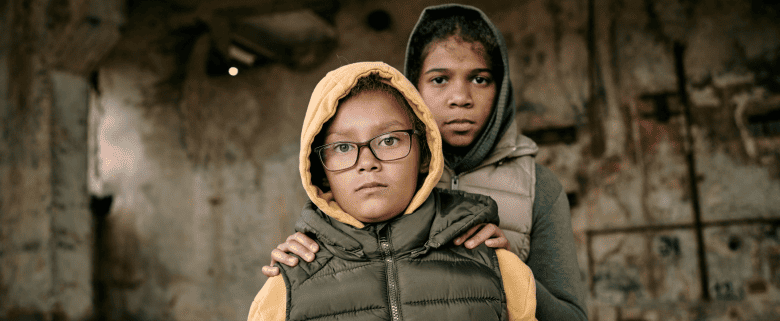How Teachers and Social Workers Can Help Homeless Children Access Quality Child Care
When a child does not have a stable place to sleep, it affects everything. How they learn, how they feel, and how they grow. But despite these challenges, one thing remains true. That is, every child deserves quality care and a safe space to learn.
Teachers and social workers are often the first people to notice when something’s not right. They see the tired eyes, the missed assignments, the silence, or the outbursts. And they also hold the power to change the story for these children by helping them access the kind of child care that offers consistency, warmth, and opportunity.
In this blog, we’ll explore practical, compassionate ways teachers and social workers in Missouri can support homeless children and guide families toward the care they need.
Who Are the Invisible Homeless?
When we think of homelessness, we might picture families in shelters or sleeping in cars. But in reality, many homeless children are living in less visible situations, like staying temporarily with relatives or friends, bouncing between motels, or moving often.
This lack of stable housing disrupts daily life. It can lead to,
- Poor nutrition and inconsistent meals.
- Interrupted sleep or hygiene routines.
- Anxiety, depression, or behavioral changes.
- Falling behind in school or missing child care entirely.
That’s why awareness is the first step. Teachers and social workers who are trained to spot the signs can intervene early without judgment. A child who is sick, tired, or withdrawn may not just be “acting out,” they may be carrying the weight of instability.
Using Federal Protections to Remove Barriers
Many do not realize that homeless children have rights under a federal law called the McKinney-Vento Homeless Assistance Act. This law protects students’ rights to immediate enrollment in school even without records and guarantees help with transportation and access to services.
Here’s how this plays out,
- Schools must enroll homeless children right away, even if they lack documentation.
- Transportation must be provided to keep them connected to their school of origin if possible.
- Liaisons in every school district are trained to assist families in crisis.
Teachers and social workers can be powerful advocates here. If they suspect a student is without stable housing, they can connect with the school liaison, share their concerns, and help the family access the protections they are entitled to.
Linking Families with Child Care and Early Learning
For young children, access to early learning is crucial. Quality child care gives children consistency, structure, and a place to feel safe and supported. Programs like Early Head Start and other community-based centers often provide,
- Developmentally appropriate learning.
- Nutritious meals.
- Health screenings and referrals.
- Emotional and social support.
Homeless children are automatically eligible for some of these programs. But many families don’t know this or struggle to navigate the system while dealing with housing insecurity.
That’s where teachers and social workers play a vital role. They assist families with completing applications, collecting necessary documents, or clarifying when they’re not needed, and connecting them to programs experienced in supporting vulnerable children.
Supporting Physical and Mental Health
Children facing homelessness often experience higher rates of health issues like asthma, untreated infections, or poor dental health. They may also carry the invisible wounds of trauma.
By helping families access consistent medical and dental care, professionals provide stability beyond the classroom. Local clinics, mobile health units, or school-based health centers can offer care regardless of a family’s ability to pay.
Emotionally, it’s just as important to nurture trust and security. Teachers can:
- Establish predictable classroom routines.
- Create calm-down corners or safe spaces in the room.
- Encourage regular check-ins to talk about feelings.
- Use gentle, patient language when correcting behavior.
Even small gestures like keeping an extra snack handy or offering a warm greeting can make a big impact on a child who’s had to grow up too quickly.
A Real-Life Story: When One Teacher Made a Difference
Let’s talk about a student named Micah. He was five years old and had just moved into a motel with his mom and little sister. At school, Micah struggled. He was quiet, tired, and easily frustrated. His teacher noticed that something was off. She gently asked a few questions, connected with the school’s social work, and soon learned that the family had lost their apartment.
Here’s what happened next:
- The teacher worked with the school liaison to keep Micah enrolled without delay.
- The social worker helped Micah’s mom apply for child care assistance for his sister.
- The family was referred to a local shelter that had case management and health services.
- The teacher offered Micah a consistent routine and praise to rebuild his confidence.
It didn’t take long for Micah to open up, start participating, and even smile more. That one adult paying attention changed everything.
Removing Enrollment and Documentation Barriers
When you are homeless, paperwork can be a nightmare. Many families can’t provide proof of residency, immunization records, or birth certificates on the spot. McKinney-Vento allows schools and child care providers to bypass these barriers temporarily. Teachers and social workers should remind families that,
- Lack of documents should never be a reason to deny care or enrollment
- Assistance is available to help collect the missing form.
- Privacy and dignity matter; no family should be made to feel ashamed.
Being flexible and understanding during the enrollment process is one of the simplest yet most impactful ways to help.
Community Connections Matter
Educators and social service professionals do not have to do it all alone. By partnering with local organizations, they can build a safety net around every child.
These partners might include,
- Food pantries and diaper banks.
- Free or low-cost clinics.
- Housing assistance agencies.
- Mental health counselors.
- Local nonprofits offering school supplies, clothing, or transportation.
Training and Teamwork: The Long-Term Solution
For long-lasting impact, schools and child care centers should,
- Train all staff to recognize signs of housing instability.
- Designate point people for crisis support.
- Build trauma-informed classrooms that prioritize safety and trust.
- Advocate for policies that fund early education access for all children, especially those facing homelessness.
Conclusion
Teachers and social workers are the first line of defense for children experiencing homelessness. Their actions, their compassion, and their determination can open doors to stability, growth, and hope.
When a child’s life feels uncertain, a consistent classroom and a caring adult can mean everything. By helping families access quality child care through resources like Child Care Aware of Missouri, health support, and educational continuity, we are not just offering services; we are restoring childhoods.
And for every Missouri child navigating homelessness, that support could be the start of something better.




